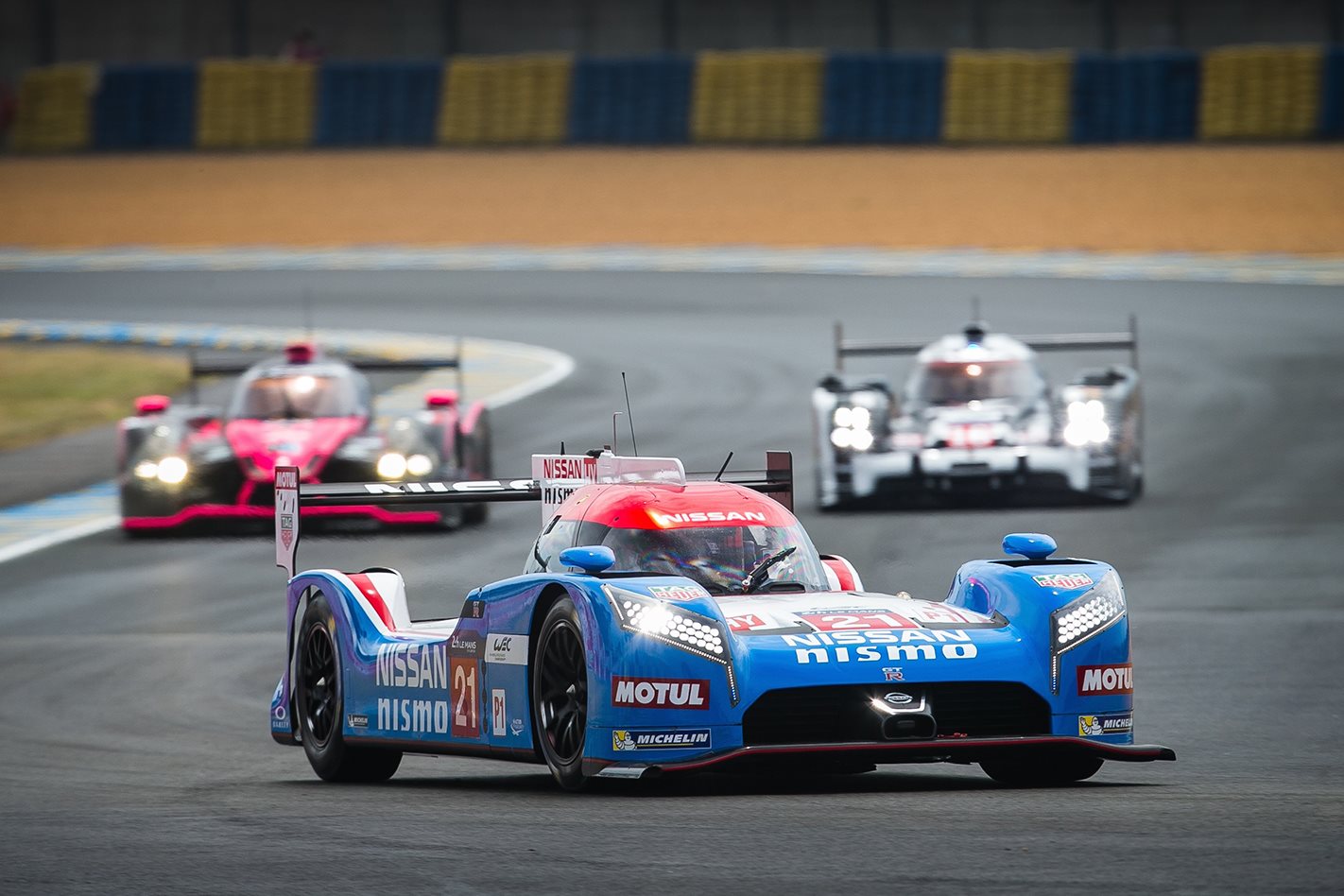In recent years, Nissan has developed a reputation for doing things a bit differently when it comes to motor racing.
Rather than follow convention, it’s had the courage to try and bring something genuinely new to the motorsport table, and it’s an approach that has led the company back to Le Mans with the radical GT-R LM, the first time Nissan will have competed in the top category since the late 1990s with its R390 GT1.
Unlike its far more conventional predecessor, this second GT-R LM is a showcase of radical and controversial engineering. Following on from its ground-breaking Deltawing and Zeod designs, Nissan is using an almost-retro front-mid-engine layout for the GT-R LM, but with a petrol V6 driving the front wheels!
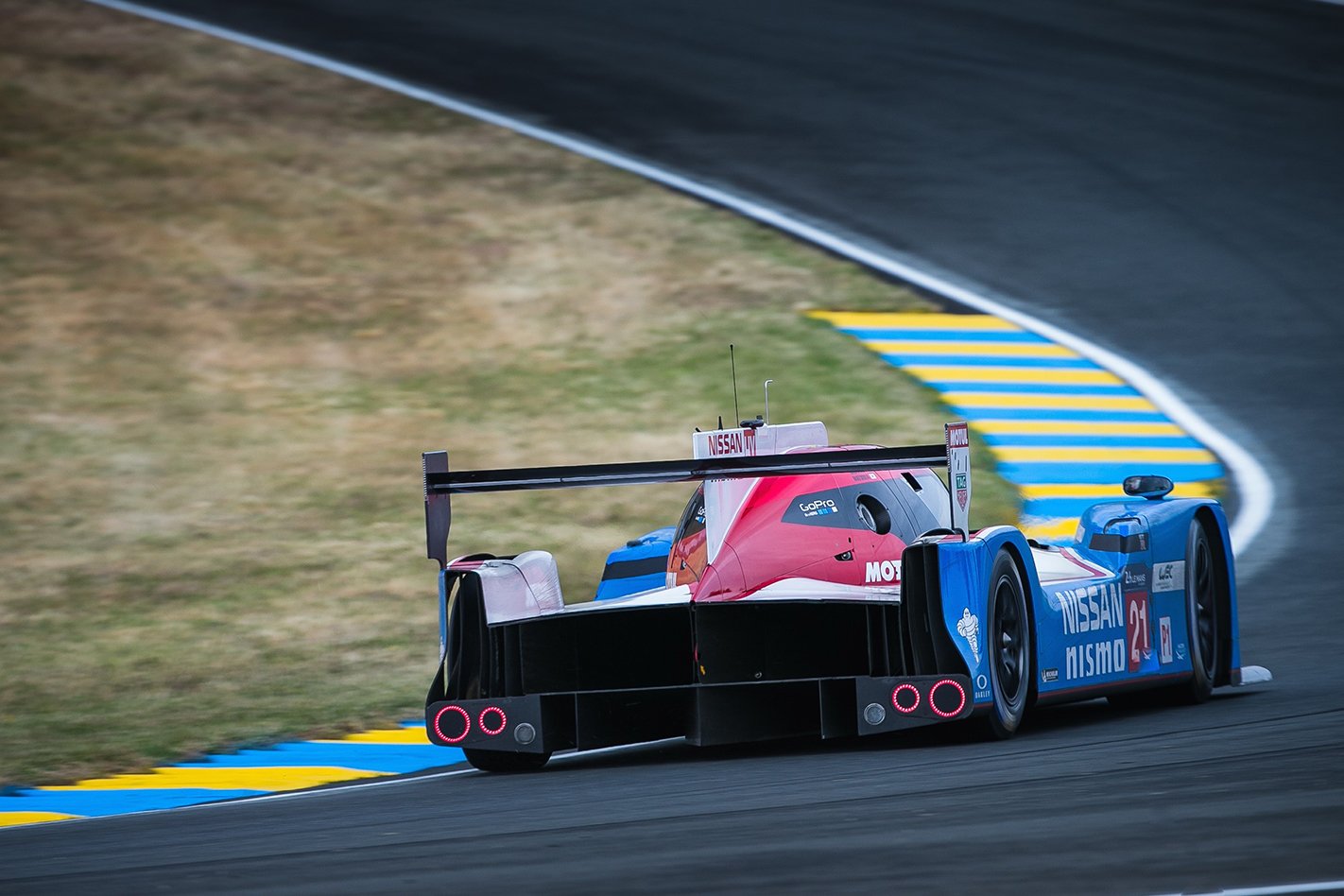
The man behind this madness is Ben Bowlby, Team Prinicipal and Technical Director of the project. Bowlby has prior form building wildly different race cars for Nissan. He’s the crazy professor who designed the radical Deltawing and Zeod, you see.
Much the same as when it entered Group A racing with the R32 GT-R, Nissan has studied the opposition and then done its own thing, as Bowlby explains. “We could have copied what Audi, Porsche and Toyota are doing, but it would have been difficult to beat them by doing that. They’ve got more experience and have put a lot of resources into their cars.”
One of the reasons for the car’s radically different approach is aero packaging and the associated rules. “If you look at the regulations you’ll see that the aerodynamics at the rear of the cars is very controlled [in terms of the wing you can run and the underbody diffuser], but they’re much more open at the front.”
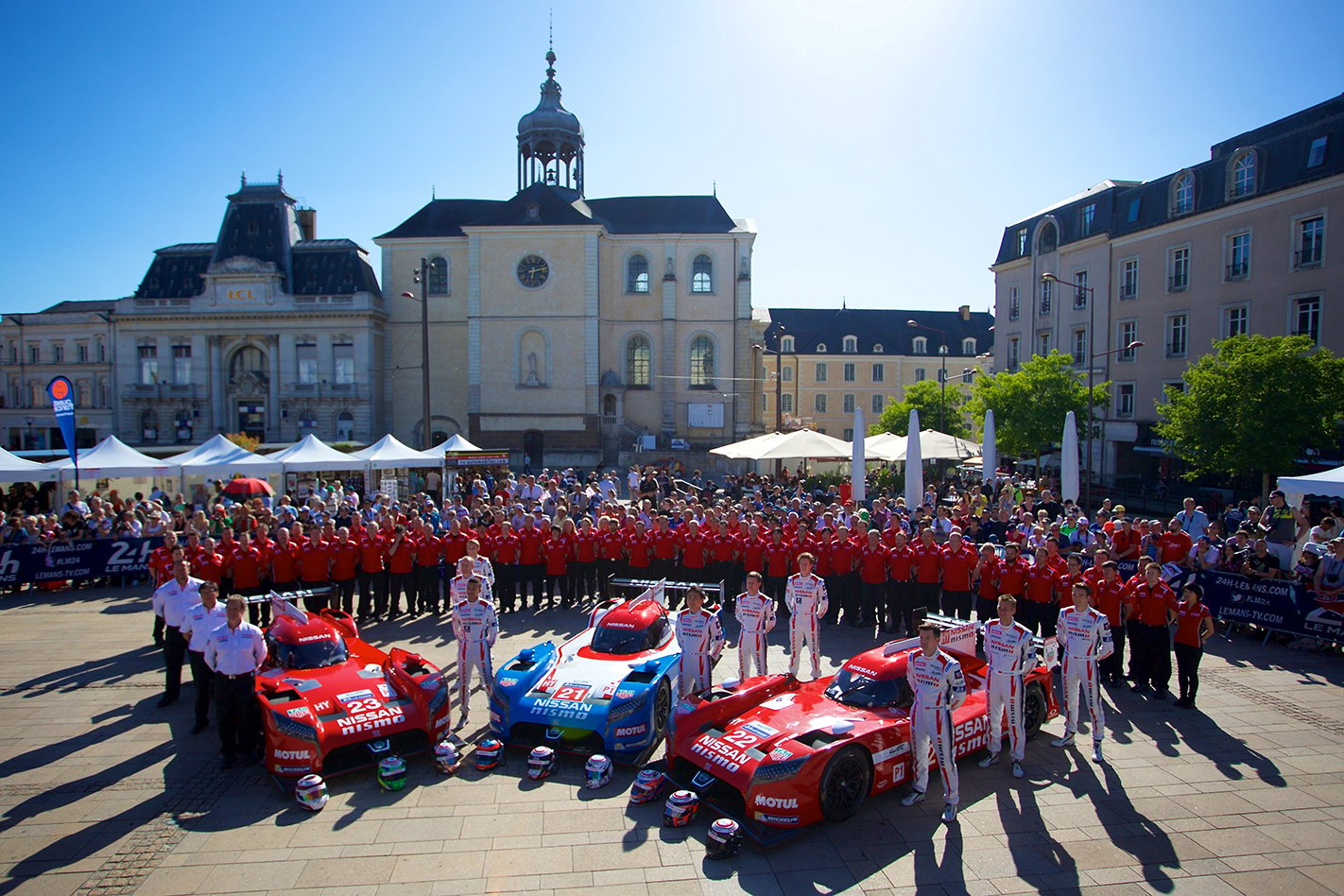
The GT-R has taken some inspiration from Time Attack racing, where aero is almost a free-for-all, and used the air going around its front-mid engine differently to conventional LMP1 cars. Bowlby has used the front splitter as an inverted wing to channel bulk air under the car, like the double-diffuser on the crazy Nemo Racing Time Attack Evo from 2012.
The key difference to other LMP1 designs is that the air is used in the front to create downforce, rather than doing so with a rear-mounted diffuser. That air still needs to get out from under the car, so Bowlby added two large passages under the GT-R, with a kick up so the air passes over the diffuser in the rear and gives even more downforce. And he can achieve this advantage as there is no drivetrain taking up all the space.
“This is a very efficient solution in terms of lowering drag… you’ve seen all those louvres on the sides of the other LMP1 cars that let the air out from underneath the front of the car to the sides, we don’t do that because it’s a bit draggy. We duct it all the way back and dump it out over the top of the diffuser at the back.”
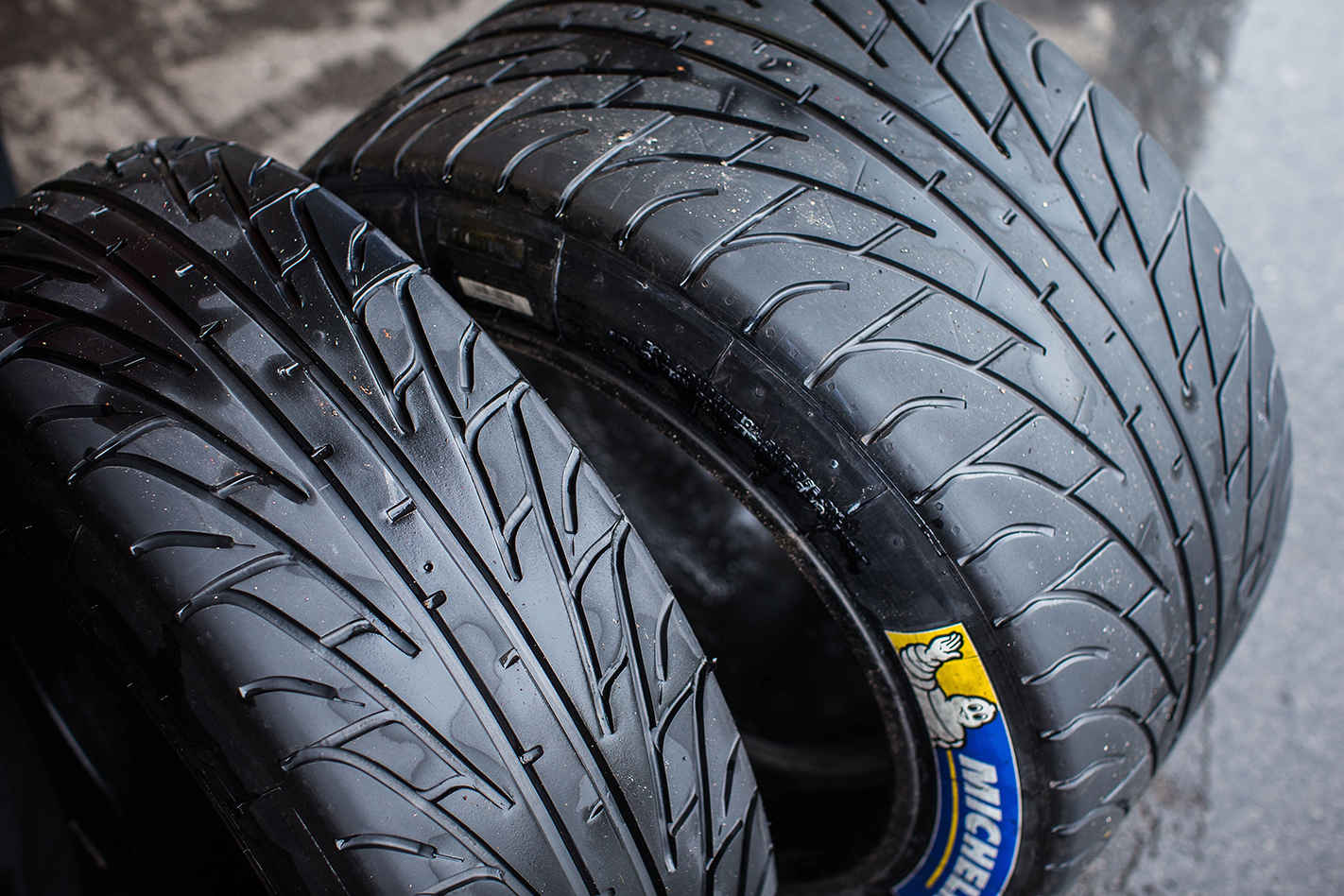
But why generate a tonne of downforce in the front? It’s handy if the heaviest parts of your drivetrain also reside in the turning end, rather than the burning end. The GT-R LM runs a 65:35 weight distribution, with 14-inch-wide front and nine-inch-wide rear tyres to balance out the nose-heavy weight and aero.
Packed snugly in the super-low-slung front is a twin-turbo 3.0-litre V6 making 410kW and peaking at 6500rpm. Bowlby says the petrol engine’s thermal losses are minimal and, thanks to exhaust pipes dumping out the bonnet, the air is processed very well.
Unlike the Group C era of sports car racing, when Nissan’s R90s made over 750kW, power isn’t the key factor to the WEC. Teams hunt efficiency thanks to FIA rules that basically require LMP1 cars to have either hybrid powertrains or a very good energy regeneration system.

While the 2014 Nissan Le Mans challenger was the electric Zeod, Nissan has not used that experience for 2015. Instead, the Nismo GT-R runs a rear-mounted KERS-style energy regeneration system pushing up to 515kW to the wheels under acceleration. So while outright power isn’t the main goal, Nissan’s GT-R LM is capable of deploying over 930kW from its various systems. Yes, 930kW.
And here is, yet again, where the conventional and radical clash with stunning engineering. Bowlby’s team are trialling a system using traditional gears and clutches to turn an 8kg carbon and steel flywheel inside a vacuum, with a computer controlling it. Mounted horizontally on the gearbox output shaft it lies on a fore/aft axis near the valley of the motor.
As the driver applies the brakes, the computer calculates if the car’s speed should be retarded by the conventional hydraulic brakes or by the inertia of the 8kg flywheel.

The really trippy fact is the physics behind the flywheel, though. Flat out it can gain 19,000rpm per second up to a maximum of 60,000rpm, meaning the outer ring is loaded to 47,000G and spins at Mach 2.
This means, if it wasn’t housed in a vacuum, it would create a sonic boom. This kind of innovation arguably hasn’t been seen since the days of Jim Hall’s Chaparrals.
Unbelievably, despite internet experts and Saab Viggen-owners claiming the torque-steer would break the driver’s wrists before they even got into the car, Nissan has decided to run the car in front-wheel drive only for its first Le Mans outing.
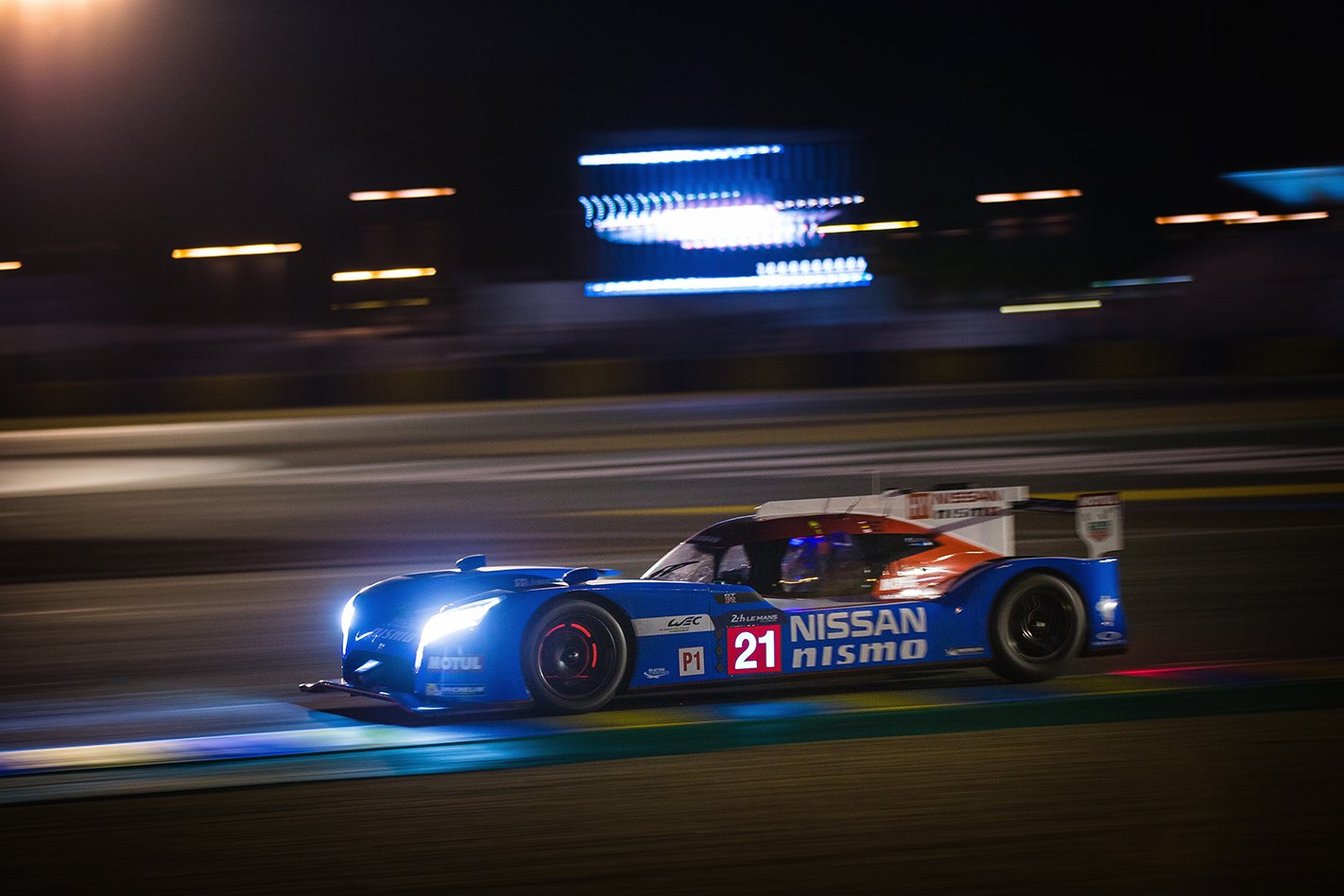
The biggest issue he sees is weight. “We’re going to be really challenged to make our weight target of 880kg when half of the weight of the car is the powertrain,” he says.
Nissan’s unconventional approach to racing extends beyond the mechanicals to its driver line-up. While ex-Formula One driver and 2009 Le Mans 24 Hour winner Marc Gené will lead the squad along with sports car regulars Michael Krumm, Olivier Pla and Harry Tincknell, Nissan is promoting at least two of its GT Academy winners to its LMP1 program.
Lucas Ordonez won the inaugural GT Academy in 2008, with Jann Mardenborough following in his footsteps in 2011. The promotion completes their journey from talented video gamers to professional race drivers competing at the highest level.
“Jann and Lucas have proved their merit as professional racing drivers time and time again,” said Nissan’s global marketing boss, Darren Cox. “These guys are proof that if you want something badly enough and are prepared to give it everything you’ve got, you will succeed.”
But can Nissan succeed? Whether or not it succeeds, we’re damn glad that one manufacturer is keeping racing interesting by thinking so far outside the box.

